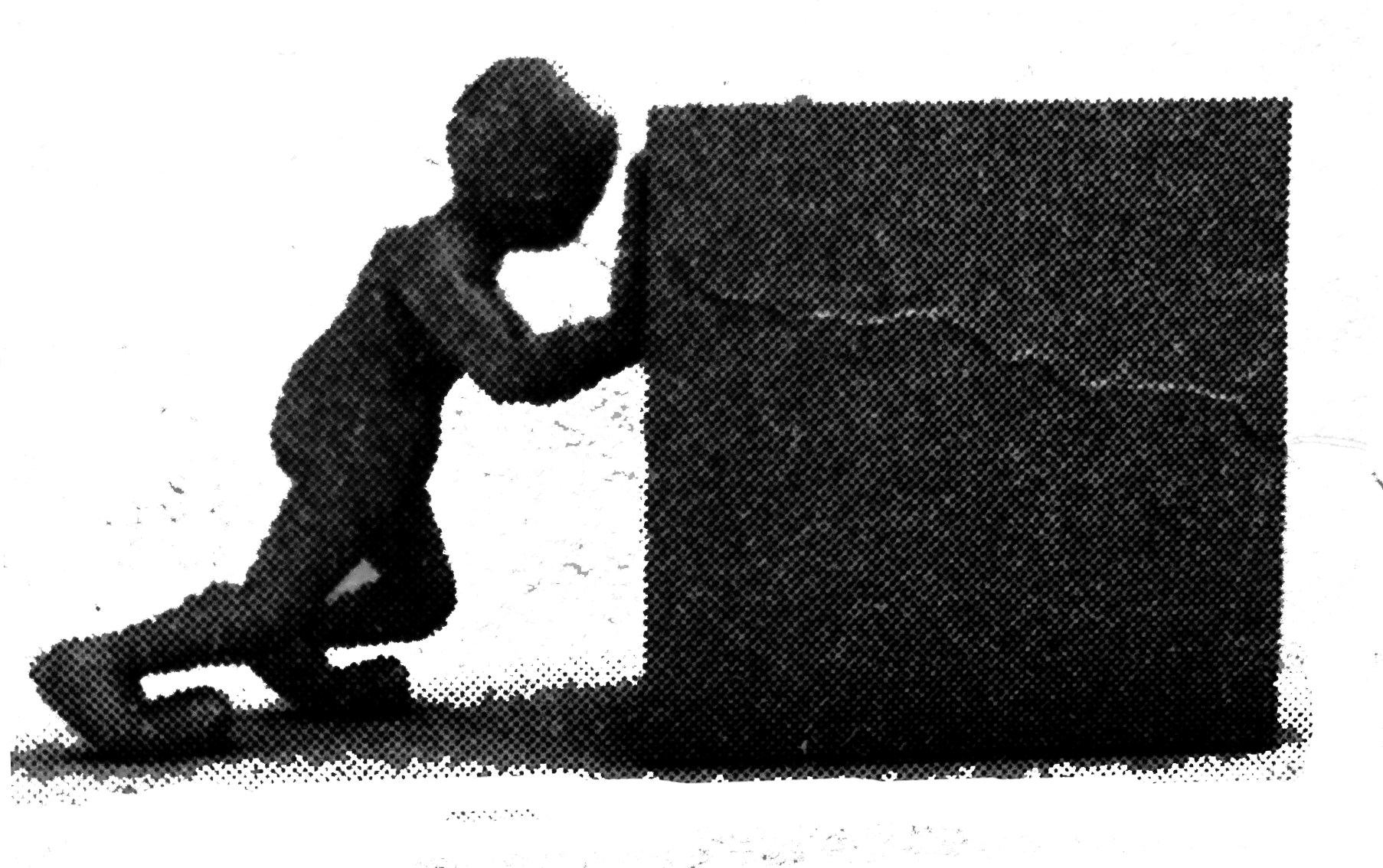An empty luggage carrier A of mass M=40kg slide without friction on horizontal floor hits with a velocity v0=5ms−1 an identical carrier B containing m=15 mg suitacase. The impact causes the suitcase to slide on the floor of carrier B and collide with the left wall of carrier B. knowing that the coefficient of restitution between the two carriers is 0.80 and that the coefficient of restitution between the suitcase and the wall of carriere B is 2/9. Assume no friction any where. Find

a. the velocities of carrier A and carrier B just after collision.
b. the velocity of carrier B after the suitcase its the wall for the first time is
Collision of carrier A with carriere B.
Let velocities of carrier A and B just after collision be vAandvB respectively.
40×5=40=40vA+40vB
vA+vB=5……….i
Using Newton's restitution equation
vB−vA0.8(5−0)………ii
vB−vA=5
Solving eqn i and ii we get
vA=12ms−1,vB=92ms−1
As there is no friction the suitcase will no slide with respect to carrier, hence velocity of suitcase with respect to the ground will be zero.
Now collision of suitcase with carrier using C.O.L.M.

40×92+0=40v′B+15vs
Here v′B and vs are the velocities of carrier B and suitcase just after collision
180=40v′B+15vs
36=8v′B+3Vs .............iii
Using Newton's restitution equation
VB−V′B=29(vB−0)⇒vs−v′B=29(92−0)
vs−v′B=1
After solving v′B=3ms−1 and vs=4ms−1
Topper's Solved these Questions
- CENTRE OF MASSBOOK - CENGAGE PHYSICSCHAPTER - CENTRE OF MASSEXERCISE - Exercise 1.1
20 Videos
- CENTRE OF MASSBOOK - CENGAGE PHYSICSCHAPTER - CENTRE OF MASSEXERCISE - Exercise 1.2
23 Videos
- CENTRE OF MASSBOOK - CENGAGE PHYSICSCHAPTER - CENTRE OF MASSEXERCISE - INTEGER_TYPE
1 Videos
- CALORIMETRYBOOK - CENGAGE PHYSICSCHAPTER - CALORIMETRYEXERCISE - Solved Example
13 Videos
- DIMENSIONS & MEASUREMENTBOOK - CENGAGE PHYSICSCHAPTER - DIMENSIONS & MEASUREMENTEXERCISE - Integer
2 Videos
Similar Questions
Knowledge Check
A small sphere of mass 1kg is moving with a velocity (6ˆi+ˆj)m/s . It hits a fixed smooth wall and rebounds with velocity (4ˆi+ˆj)m/s. The coefficient of restitution between the sphere and the wall is
A32B23C916D49The carrier for amoebiasis is
AEntamoebia histolyticaBMosquitoCMuscaDPlasmodium vivaxA particle strikes a horizontal smooth floor with a velocity a making an angle θ with the floor and rebounds with velocity v making an angle ϕ with the floor. If the coefficient of restitution between the particle and the floor is e, then
Athe impulse delivered by the floor to the body is μ(1+e)sinθBtanϕ=etanθCv=u√1−(1−e)2sin2θDthe ratio of final kinetic energy to the initial kinetic energy is (cos2θ+e2sin2θ)
A particle of mass m strikes a horizontal smooth floor with velocity u making an angle θ with the floor and rebound with velocity v making an angle θ with the floor. The coefficient of restitution between the particle and the floor is e. Then
View SolutionA particle of mass m strikes a horizontal smooth floor with velocity u making an angle θ with the floor and rebound with velocity v making an angle θ with the floor. The coefficient of restitution between the particle and the floor is e. Then
View SolutionA man of mass 75kg is pushing a heavy box on a flat floor. The coefficient of kinetic and static friction between the floor and the box is 0.20, and the coefficient of static friction between the man's shoes and the floor is 0.80. If the man pushes horizontally, what is the maximum values (in kg) of the box he can move?

View SolutionA particle strikes a horizontal smooth floor with a velocity u making an angle θ with the floor and rebounds with velocity v making an angle ϕ with the floor. The coefficient of restitution between the particle and the floor is e.
View SolutionA man of mass 75kg is pushing a heavy box on a flat floor. The coefficient of kinetic and static friction between the floor and the box is 0.20, and the coefficient of static friction between the man's shoes and the floor is 0.80. If the man pushes horizontally, what is the maximum values (in kg) of the box he can move?

View Solution
